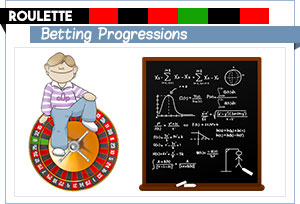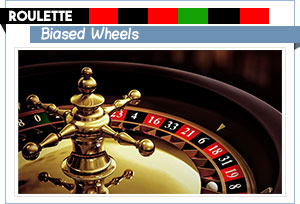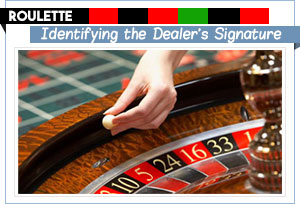Players have been trying to beat the “Devil’s wheel” ever since the game of roulette was first introduced to casino floors at the end of the 18th century. These century-long efforts have resulted in numerous roulette strategies being devised, each one luring players with the promise of quick and easy-to-earn profits. The fact this engaging game of chance is still offered in all reputable brick-and-mortar gambling establishments and has also made its way online in recent years only speaks for the efficiency of the vast majority of roulette systems. Yet, some systems have stood the test of time and are still in use to this day.
One very important thing to consider before you head to the roulette table with any given system in mind is that such strategies do nothing to affect the built-in house advantage and reduce it to the benefit of the player. Moreover, no roulette system can possibly influence the outcome of the spins – the true odds of winning always remain the same, regardless of what betting strategy one follows at the table.
That being said, roulette betting systems, when disciple is at hand, can help players manage their funds smartly and protect them from depleting their bankrolls during unfavourable streaks. Or vice versa – following one such strategy can help you make the most of your hot streaks and maximize your overall return. We have covered some of the most popular roulette betting systems and strategies in the sections to follow, so read on to learn more about capitalizing on your luck when playing roulette.
Betting Progressions Applicable to Roulette
 The betting progressions applicable to the game of roulette can be classified into two major categories, depending on whether the bet sizing decreases or increases following a loss. Systems like the Martingale, the Labouchere, the Fibonacci, and the D’Alembert utilize negative progressions since they require players to increase their bet size after losing wagers.
The betting progressions applicable to the game of roulette can be classified into two major categories, depending on whether the bet sizing decreases or increases following a loss. Systems like the Martingale, the Labouchere, the Fibonacci, and the D’Alembert utilize negative progressions since they require players to increase their bet size after losing wagers.
Systems like the Paroli and the Parlay are classified within the group of positive progressions because the stakes are increased after winning bets. One exception which falls in neither category is the so-called Level Betting where the stakes remain the same regardless of the previous spins’ outcomes.
The Martingale
The Martingale easily wins the title of the most popular and widely used betting progression of all time. This resilient system was invented back in the late 18th century but continues to be in use to this very day. What further adds to its appeal is the fact it works in a variety of classic casino games, including roulette, blackjack, baccarat, and craps.
The Martingale system is based on the idea that increasing one’s stakes exponentially would eventually help players surmount previous losses and turn a profit at the end of their betting session. With the Martingale, players need to decide on a base unit to bet and double their stakes after each losing spin. After the player registers a win, they reduce their next stake to the initial unit. Please note that this system is generally recommended for outside bets which return even money.
For example, if you bet $2 and lose, you stake $4 next; you lose again so you bet $8 next time and win. This way, you will have lost a total of $6 for an overall return of $8, which is to say you will be one base unit ahead or $2 in this case. The base bet sizing and the number of consecutive losses you experience are not relevant as you will always generate a net profit of precisely one unit in the end if you rigidly follow this system.
Players who adopt the Martingale are likely to face two major issues. First of all, a long losing streak in a game of chance is not as unlikely an occurrence as many people like to think. A certain risk always exists of the progression getting steeper, causing you to risk more and more money with each subsequent spin. Your intuition may suggest it would be impossible to lose seven even-money bets in a row but it does happen every once in a while.
The efficiency of the Martingale largely depends on the size of your session bankroll and the upper limit of the table. A longer string of consecutive losses may result in either your bankruptcy or in you reaching the table maximum prior to registering a win. If this happens, you will either be unable to proceed with the betting progression according to plan or will deplete your bankroll before you recover your losses.
Many players consider the standard Martingale too steep a progression, which is why they prefer to use its reverse variant. It works precisely like the regular Martingale only one doubles their bet following a win and goes back to the base betting unit after a loss. Another variation of this progression is the Mini Martingale where the player limits the number of times they double up after losses.
| Spin # | Bet Size | Spin Outcome | Net Winning |
|---|---|---|---|
| 1 | 50 | Win | 50 |
| 2 | 50 | Lose | 0 |
| 3 | 100 | Lose | -50 |
| 4 | 200 | Lose | -250 |
| 5 | 400 | Win | 150 |
The D’Alembert
The D’Alembert is another hugely popular betting strategy many players prefer to use in games of roulette. The system borrows its name from the French mathematician, philosopher, and music theorist Jean Le Rond D’Alembert who made many notable strides in the fields of mathematics and physics in the 18th century. D’Alembert argued that the probability of a coin landing on tails increased exponentially each time heads came up. Of course, such notions have long been proven wrong but this argument of D’Alembert’s gave rise to the majority of systems based on negative progressions.
One of the greatest advantages the D’Alembert system has to offer to roulette players is that it involves a less steep increase of bet sizing. This renders it a safer alternative to the Martingale as it, too, suits the needs of those who play on even chances. As usual, the first thing you need to do is determine the size of your base betting unit. Around 2% to 5% of the overall bankroll is the general recommendation.
Once you settle for your base bet amount, you start by betting one unit. Following a loss, you increase the next bet with one betting unit. Win results in a decrease of one base unit for the next spin. If a player registers a win in the very first round, they continue to flat bet using their base unit until a loss occurs to vindicate a one-unit increase for the next spin.
As you can see, this system is easy enough to understand and follow but how effective is it at the roulette table? The chief idea behind the D’Alembert is that if players register roughly the same number of losses and wins, they will be able to come ahead. This can be explained by the fact a win after several losses is registered at a higher stake which would suffice to balance out previous bad runs.
There are two major advantages the D’Alembert holds over the Martingale. The betting progression here is flatter so that players do not risk as much money after each consecutive loss. This also reduces the risk of hitting the table maximum or draining your bankroll before you score a win.
Like all other betting progressions, the D’Alembert does not fully take into consideration the law of averages which dictates that roulette outcomes tend to even out in the long term. Over hundreds of thousands of spins, black and red, odd and even, and high and low outcomes will eventually balance out. But you cannot expect this to happen over the course of a single session. There can be quite notable imbalances in the short term so there is no guarantee you will register an even number of losses and wins to benefit from this system.
| Spin # | Bet Size | Spin Outcome | Net Winning |
|---|---|---|---|
| 1 | 50 | Win | 50 |
| 2 | 50 | Lose | 0 |
| 3 | 100 | Lose | -50 |
| 4 | 150 | Lose | -100 |
| 5 | 200 | Win | 100 |
The Labouchere
Also known as the Cancellation system or the Split Martingale, the Labouchere was devised in the 19th century by British politician Henry Labouchere who allegedly was also an avid roulette player. This is one of the more complex systems where novices are normally required to use a pen and a writing pad in the beginning.
The first thing players need to do is again determine the sizing of their base betting unit. Once done with that, they are required to write down a sequence of positive numbers that sum up to a fixed amount. This predetermined amount corresponds to the overall profits the player is hoping to generate at the end of the session. Each number in the sequence corresponds to a number of betting units.
With the first bet, the player stakes an amount that is equal to the sum of the first and the last numbers in the sequence. So if your sequence runs 1, 2, 3, 4, 5, with a base unit of $1, the overall profit you are aiming for would be the sum of all numbers, or $15, while your first bet would amount to six base units or $6.
If your first bet wins, you cross off 1 and 5, and then sum up 2 and 4 so for your next bet sizing. If the first spin, however, results in a loss, you add the total of the first and the last number at the end of the sequence, so your second bet would be seven units or $7. Provided that you are left with only one number, you bet that amount. This continues either until you have no more numbers on your list, at which point you have reached your winning goal for the sequence, or until you are left with no more money to stake.
Similarly to other negative progressions, the Labouchere has one major downfall – players are expected to bet higher and higher amounts after each consecutive loss. A certain possibility of reaching the table maximum exists as you continually append numbers to your existing sequence. Another downside is its complexity itself as many inexperienced roulette players will find it difficult to remember their sequences by heart to apply at the table.
On the positive side, this system allows for flexibility as players can practically choose any number sequence they wish. The numbers need not be consecutive in value. It is advisable to start with a simple sequence. Incorporating zeros into your sequence is also an option if you want to reduce the amount of risk you take following a loss.
| Spin # | Sequence | Bet Size | Spin Outcome | Net Winning |
|---|---|---|---|---|
| 1 | 10-20-30-40-50 | 60 | Win | 60 |
| 2 | 20-30-40 | 60 | Win | 120 |
| 3 | 30 | 30 | Lose | 90 |
| 4 | 30-30 | 60 | Lose | 30 |
| 5 | 30-30-60 | 90 | Lose | -60 |
| 6 | 30-30-60-90 | 120 | Win | 60 |
| 7 | 30-60 | 90 | Win | 150 |
The Fibonacci
The Fibonacci is among the most commonly known betting systems, largely due to the fact it borrows both its name and principles from the famous sequence of Italian mathematician Leonardo of Pisa, also called Fibonacci.
This sequence is incredibly ancient since it was first discovered by Indian mathematicians, although it went by a different name at the time. It consists of series of numbers where each subsequent number is equal to the total of the two numbers which precede it, like this – 1, 1, 2, 3, 5, 8, 13, 21, 34, and so on to infinity. You may wonder what is so special about this sequence of numbers. The truth of the matter is these are considered “Nature’s” numbers as they appear everywhere, from the number of leaves on a plant’s stem to the number of seeds found on a sunflower’s seed head.
So how does this enigmatic number sequence apply to the game of roulette? You probably have already guessed but players who utilize the Fibonacci progression at the roulette table need to adjust their bet sizing on the basis of previous results using the famous sequence. Thus, you start with one betting unit and if you lose, you bet the amount corresponding to the next number in the sequence. You proceed this way until you register a win, at which point you move down the sequence with two numbers. For example, you win after staking 21 units, so you stake only 8 units next.
This continues on until you turn a net profit at any given time, in which case you either end the session or go back to the very beginning of the sequence. This negative betting progression is not for everybody. First of all, it requires a good deal of concentration as players need to keep a close track of their profits during each cycle so that they know when to go back to the sequence’ beginning. Second, the Fibonacci must be the steepest negative progression on planet Earth and as such is only recommended for players with massive bankrolls which would help them endure long strings of losses without going bankrupt. Finally, reaching the table maximum prior to recouping one’s losses is a source of apprehension for many roulette players.
| Spin # | Sequence | Bet Size | Spin Outcome | Net Winning |
|---|---|---|---|---|
| 1 | 1 | 1 | Win | 1 |
| 2 | 1 | 1 | Lose | 0 |
| 3 | 1-1 | 1 | Lose | -1 |
| 4 | 1-1-2 | 2 | Lose | -3 |
| 5 | 1-1-2-3 | 3 | Lose | -6 |
| 6 | 1-1-2-3-5 | 5 | Win | -1 |
| 7 | 1-1-2 | 2 | Win | 1 |
The Parlay System
The Parlay is one of the easiest betting systems for roulette as it requires no mathematical background and is rather simple to follow. Unlike the systems explained above, the Parlay relies on a positive betting progression, which is to say players should up their stakes after a win and reduce them following a loss. If you intend to use the Parlay system, the only thing you need to do is decide on the base amount you want to stake per spin and set a win goal for the session.
One of the greatest strengths of this system is that players are not required to necessarily bet on even chances like red/black, odd/even or high/low. The system is applicable to all types of bets in roulette, both outside and inside. Sports fans may be familiar with the term “parlay” as it refers to a combination bet where all selections must win in order for the punter to collect a payout.
This positive betting system is based on letting your winnings ride. For example, you have set a win goal of $200 for yourself and intend to start with an initial bet of $10. You start by staking your $10 on red, 25 Red comes up, and you collect $20 in total. Then you bet the $20 you have just won on black and win again, collecting $40. You bet your $40 on the six-line placing your chips between 4 and 7 thus covering numbers 4, 5, 6, 7, 8, and 9. Number 7 hits and as your bet returns at a ratio of 5 to 1, you collect a net profit of $200, thus reaching your win goal for the session. If you lose at any stage prior to achieving the win goal, you go back to your initial bet sizing of $10.
Apart from allowing for a greater flexibility with one’s bets, the Parlay system is the perfect solution for players looking to generate profits over the short term. On the downside, the Parlay system relies on consecutive wins in order to work. The key is to collect your money as soon as you reach your win goal since all streaks, bad or good, inevitably come to an end.
| Spin # | Bet Size | Spin Outcome | Net Winning |
|---|---|---|---|
| 1 | 50 | Lose | -50 |
| 2 | 50 | Win | 0 |
| 3 | 100 | Lose | -100 |
| 4 | 50 | Win | -50 |
| 5 | 100 | Win | 50 |
The Paroli System
The Paroli is similar to the Parlay in that it, too, is based on a positive progression, which is to say you increase your bet size after a win. The root of the word “Paroli” comes from the Latin “par” which translates as “matching” or “equal”. This system has been in use since the 16th century when gamblers applied it to the card game Basset. In modern times the system is applied mostly in games of chance like roulette and baccarat, but some players use it with a great success in dice games like craps and Sic Bo.
To use this system, players need to start with staking one betting unit on an even-money outcome such as red/black or odd/even. The goal is to secure three wins in a row. If the player’s first bet loses, they stake one base unit again and continue with level betting until they register a win. However, if the first bet is successful, the player proceeds by betting two base units. In the event of losing the second bet, the player returns to their initial base stake, but if they win again, they double their next wager to four units.
Once they have registered three consecutive wins, the players drop back to their original, one-unit stake. Each time a cycle of three consecutive wins is complete, the player collects a profit of seven units which would suffice to offset the small losses they have accumulated on previous spins.
Many argue the strength of this system lies in the fact three consecutive wins with even-money bets are hardly a rare occurrence in roulette. Therefore, the Paroli system is said to reduce the risk of accruing massive losses while allowing players to generate small but consistent profits. For the most part, the system is the opposite of the Martingale betting progression, only a ceiling is set to the maximum amount you put on stake.
| Spin # | Bet Size | Spin Outcome | Net Winning |
|---|---|---|---|
| 1 | 50 | Lose | -50 |
| 2 | 50 | Win | 0 |
| 3 | 100 | Win | 50 |
| 4 | 150 | Win | 200 |
| 5 | 50 | Lose | 150 |
The Oscar’s Grind System
The Oscar’s Grind betting system was first introduced to the public in the 1960s, in the book The Casino Gambler’s Guide by Allan Wilson. You may encounter this system under different names, like Hoyle’s Press or Pluscoup Progression, but they all refer to a positive betting progression which relies on the idea that losses and winnings typically occur in streaks. Players can exploit this tendency by staking lesser amounts during bad runs and increasing their bets should they detect the beginning of a winning streak.
The system is suitable when playing on even chances like red/black, odd/even, and high/low. When using the Oscar’s Grind, each betting cycle will consist of four stages. You start by betting one base unit on an even-chance outcome. If you win, you increase your next stake with one base unit. Should a loss occur, your bet size remains the same or one unit.
The goal of the player is to register a profit of one unit and once this happens, they reduce their stakes back to the initial, one-unit sizing. The player returns to their base stake as soon as they win one unit, regardless of whether they have made it to betting four units or not. One very important peculiarity of this system is that players neither reduce or increase their wagers after they suffer a loss – level betting is used instead.
Now, let’s demonstrate with an example for further clarification. You join the roulette table with a starting unit of $10, bet on black, red comes up and you lose. Then, you bet $10 again on black and lose a second time, which is not all that unlikely to happen. The third even-chances bet is again $10 but this time you are successful. This means you need to up your fourth bet with one base unit to $20. You win again and the betting cycle is completed at which point you have generated net profits of $30 and have lost only $20, so practically you are one base betting unit ahead.
Like all systems, the Oscar’s Grind has its downsides. This progression relies on the idea that winning streaks can compensate for bad runs in the short term. One major disadvantage of this system is that it cannot help players capitalize on individual wins or choppy sequences, where winning and losing results alternate. The system derives its strength from consecutive wins. In fact, single lucky spins work to the disadvantage of the players because they are expected to up their bets following a win.
| Spin # | Level | Bet Size | Spin Outcome | Net Winning |
|---|---|---|---|---|
| 1 | 1 | 1 | Lose | -1 |
| 2 | 1 | 1 | Win | 0 |
| 3 | 2 | 2 | Lose | -2 |
| 4 | 2 | 2 | Lose | -4 |
| 5 | 2 | 2 | Lose | -6 |
| 6 | 3 | 3 | Win | -3 |
| 7 | 4 | 4 | Win | 1 |
Level Betting
Many recreational roulette players opt for the level or flat betting approach in an attempt to protect their bankrolls. As has become evident, most roulette systems are based on mathematical progressions where players vary their bet sizing depending on the outcomes of previous spins. This is not the case when one level bets – as the name itself implies, the player is repeatedly staking the same amount of money no matter whether they have won or lost on the last spin.
One problem with level betting is that players, who adopt this approach for even-money bets, always end up losing in the long run because the zero tips the odds in favour of the house. The house edge gradually grinds away their bankrolls and they never get ahead. Level betting is generally recommended as a suitable option when placing Straight Up bets, because the higher payouts can offset previous losses should one’s winning number come up early. On the downside, individual numbers hit rarely – a certain possibility always exists of your lucky number not appearing throughout the entire betting session.
One of the biggest advantages of this approach is that players are never risking massive amounts of money following several consecutive losses. Additionally, one’s mind is not preoccupied with mathematical progressions as bet sizing never changes.
| Spin # | Bet Size | Spin Outcome | Net Winning |
|---|---|---|---|
| 1 | 50 | Lose | -50 |
| 2 | 50 | Win | 0 |
| 3 | 50 | Win | 50 |
| 4 | 50 | Win | 100 |
| 5 | 50 | Lose | 50 |
Approaching Roulette in Landbased Casinos
The betting progressions and strategies suggested above are applicable in both online and landbased casinos as they have to do predominantly with bet sizing. Seasoned roulette players, however, have devised various clever ways to beat the odds when playing the game specifically in brick-and-mortar casinos. Unlike betting progressions, mastering the approaches we have outlined below requires a good amount of time as well as practice, perseverance, and patience.
Visual Tracking of the Wheel
![]() Visual tracking is one of the oldest methods for prediction of the spins’ outcome in roulette but it is a talent that needs nurturing and practice. The term “visual tracking” refers to a player observing intently the spinning of the ball and its relative position on the wheel-head. The goal is to predict correctly which sector the ball is likely to land in. It makes sense that visual acuity and the ability to concentrate are qualities all skilled visual trackers share.
Visual tracking is one of the oldest methods for prediction of the spins’ outcome in roulette but it is a talent that needs nurturing and practice. The term “visual tracking” refers to a player observing intently the spinning of the ball and its relative position on the wheel-head. The goal is to predict correctly which sector the ball is likely to land in. It makes sense that visual acuity and the ability to concentrate are qualities all skilled visual trackers share.
Certain external conditions must be at hand for visual trackers to work their magic. This approach is mostly effective on old-model wheels because of their ball tracks’ peculiarities. Also, the ball should be launched with more force as this would enable it to retain a steady rotation at an average speed. Another necessary condition is the repetitive ball drop – the ball needs to mostly hit the same perimeter of the ball track.
The material the ball is made of is also of consequence because it has an effect on its liveliness or how much it bounces off the wheel-head. As a general rule, visual trackers steer clear of bouncy balls because they render it more difficult to predict the results of the spins correctly. Last but not least, the dealer should launch the ball with relatively the same force on every spin.
To track the ball, the player needs to establish a reference point, which usually is the green zero pocket. More importantly, the focus mostly remains on the reference point and never on the ball. The ball remains in the tracker’s peripheral vision. Also, visual trackers would normally work with a partner, who would detect their signals, interpret them correctly, and place the corresponding bets on the layout.
Exploiting Biased Wheels
 As we know, the wheel is what ensures the randomness of results in roulette. Yet, it would be fair to say there is no such thing as a 100% random wheel. This can be explained with the small imperfections and irregularities which often result in the process of manufacturing. Also, over several years of use, a wheel that is not maintained properly may suffer small damages that are invisible to the naked eye. These imperfections would impact negatively the randomness of the wheel and would lead to more and more pronounced bias towards specific sectors or even individual numbers and colours.
As we know, the wheel is what ensures the randomness of results in roulette. Yet, it would be fair to say there is no such thing as a 100% random wheel. This can be explained with the small imperfections and irregularities which often result in the process of manufacturing. Also, over several years of use, a wheel that is not maintained properly may suffer small damages that are invisible to the naked eye. These imperfections would impact negatively the randomness of the wheel and would lead to more and more pronounced bias towards specific sectors or even individual numbers and colours.
Some inexperienced players come up with the argument that randomness is ensured by the opposite directions of rotation of the wheel-head and the ball. The truth of the matter is that all roulette wheels normally display a bias, no matter how small. A skilled and experienced player would be able to detect this bias and use it to their benefit. However, the bias should be pronounced enough to help the player overcome the built-in house advantage.
While bouncy balls are undesirable for visual trackers, they may help players who intend to exploit biased wheels. Lively balls are more likely to end up in a biased section simply because they pass more pockets before finally settling into one.
Identifying the Dealer’s Signature
 The roulette dealers’ job is quite monotonous, especially when the person has years of experience behind their back. This causes many roulette dealers to subconsciously fall into specific patterns and launch the ball with the same force and hand movement each time. Therefore, the lateral spin and the rotation’s velocity will be roughly the same, which translates into more predictable results. This pattern is known as the “dealer’s signature” and smart players know how to use it to their advantage.
The roulette dealers’ job is quite monotonous, especially when the person has years of experience behind their back. This causes many roulette dealers to subconsciously fall into specific patterns and launch the ball with the same force and hand movement each time. Therefore, the lateral spin and the rotation’s velocity will be roughly the same, which translates into more predictable results. This pattern is known as the “dealer’s signature” and smart players know how to use it to their advantage.
Once a skilled player has spotted a dealer with a consistent signature, they need to establish what the ball’s release point is and how it relates to the wheel. When a dealer has fallen into an unconscious pattern, the ball will almost always make the same number of revolutions before it finally ends up on the wheel. The goal of the player is to correctly predict the sector the ball will favour so that they can make the respective winning bet.
Note that finding a dealer with a pronounced and consistent enough signature is never easy. To prevent players from exploiting such patterns, gambling establishments rotate the dealers at the roulette tables on a regular basis. Each time a shift rotates, the dealer signature would change.
- American Roulette
- Best Real-Money Roulette Sites
- Best Roulette Systems
- Double Action Roulette
- Double Ball Roulette
- European Roulette
- French Roulette
- High Roller Roulette
- Most Popular Roulette Games
- Phenomenal Live Roulette (Luckystreak)
- Play Roulette Online
- Progressive Jackpot Roulette
- Roulette Bets and Betting Patterns
- Roulette Odds and Probabilities
- Roulette Rules
- Roulette Variations
- Ultimate Roulette (Ezugi) Means Extreme Casino Fun













